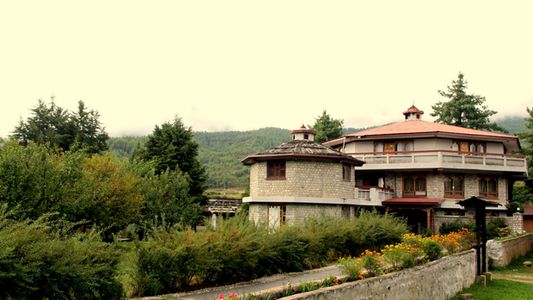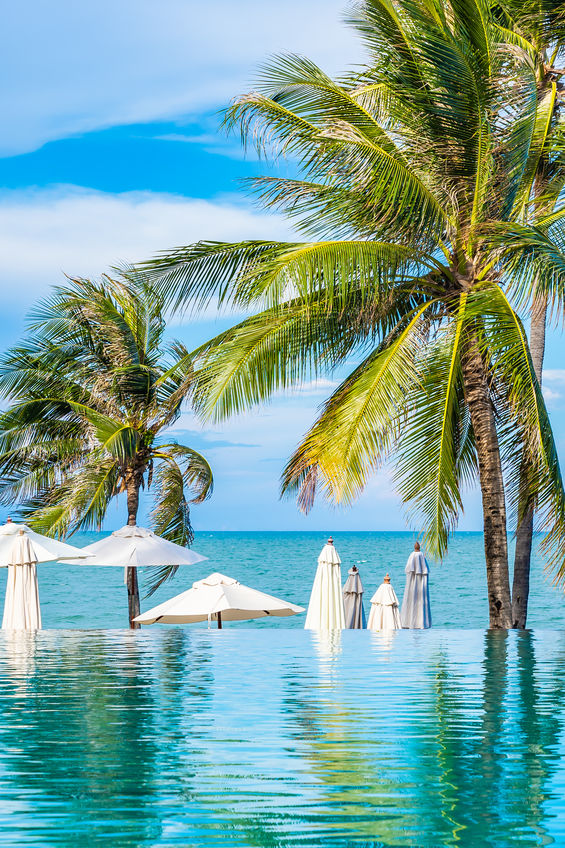
About the trip
Bhutan which is a tiny landlocked nation in East Asia is situated completely within the Himalayan range. Nepal lies to the west of Bhutan and its other close neighbours are Bangladesh and Myanmar. The country of Bhutan is also fondly called ‘The Land of Happiness’ because according to a recent survey, it was concluded that the people of Bhutan are the happiest people living on earth. Bhutan is a truly vibrant, hospitable, colourful and a mesmerising country to visit.
Accommodation

Hotel Migmar
2 nights in Thimphu

Kichu Resort
2 nights in Punakha

Tashi Namgay Resort & Spa
2 nights in Paro
Included in the price
Thimphu
- Thimphu Sightseeing & Transfer from Thimphu to Punakha/Wangdue via Dochula Pass - Hyundai Santa Fe / Toyota Innova / Nissan Terrano
Punakha
- Punakha/Wangdue Sightseeing - Hyundai Santa Fe / Toyota Innova / Nissan Terrano
- Transfer from Punakha / Wangdue to Paro With Visit to Royal Botanical Garden (With Guide) - Jumbo Hiace Van
Paro
- Transfer from Paro Airport to Thimphu - Hyundai Santa Fe / Toyota Innova / Nissan Terrano
- Paro Full Day Sightseeing (With Guide) - Hyundai Santa Fe / Toyota Innova / Nissan Terrano
- Day Excursion to Haa Valley (With Guide) - Hyundai Santa Fe / Toyota Innova / Nissan Terrano
- Transfer to Paro Airport (With Guide) - Hyundai Santa Fe / Toyota Innova / Nissan Terrano
Thimphu
- Thimphu Sightseeing & Transfer from Thimphu to Punakha/Wangdue via Dochula Pass - Hyundai Santa Fe / Toyota Innova / Nissan Terrano
Punakha
- Punakha/Wangdue Sightseeing - Hyundai Santa Fe / Toyota Innova / Nissan Terrano
- Transfer from Punakha / Wangdue to Paro With Visit to Royal Botanical Garden (With Guide) - Jumbo Hiace Van
Paro
- Transfer from Paro Airport to Thimphu - Hyundai Santa Fe / Toyota Innova / Nissan Terrano
- Paro Full Day Sightseeing (With Guide) - Hyundai Santa Fe / Toyota Innova / Nissan Terrano
- Day Excursion to Haa Valley (With Guide) - Hyundai Santa Fe / Toyota Innova / Nissan Terrano
- Transfer to Paro Airport (With Guide) - Hyundai Santa Fe / Toyota Innova / Nissan Terrano
Day-wise Itinerary
ExpandDay 1: Arrival At Paro Airport And Transfer To Thimphu
- On arrival at Paro Airport and after completing your Visa / Permit formalities you will be received by our representative who will assist you in boarding your vehicle for transfer to Thimphu. On arrival check in to the hotel.
- Evening explore the Thimpu town by walk. Overnight stay at Thimphu hotel.
Day 2: Thimphu Sightseeing - Transfer From Thimphu To Punakha / Wangdue Via Dochula Pass
- After breakfast proceed for Thimphu sightseeing visiting:
- Buddha Point (Kuensel Phodrang) is located at a short drive from Thimphu city centre, visitors can get a good overview of the Thimphu valley from the Buddha point (Kuensel Phodrang). You can pay your obeisance and offer prayers to the Buddha, the largest statue in the country and then walk around and take a glimpse of the valley.
- National Memorial Chorten stupa was built in 1974 in the memory of Bhutan's third King, His Late Majesty, King Jigme Dorji Wangchuk, who is popularly regarded as Father of modern Bhutan. The paintings and statues inside the monument provide a deep insight into Buddhist philosophy.
- The Folk Heritage Museum is dedicated to connect people to the Bhutanese rural past through exhibits, demonstrations, educational programmes and documentation of rural life. The principal exhibit in the museum is a restored three storey traditional rammed mud and timber house, which dates back to the mid 19th century. The design and form of house is that of an average household in the Wang area during that era. The age of structure demonstrates the durability and performance of the building materials. From ground to top floor, household objects, typical domestic tools and equipments that would have been used by a family during that period are put on display. The museum is also developing some of the native trees and plants that were used for various domestic purposes in the rural households.
- Later in the afternoon, transfer to Punakha / Wangdue Phodrang via Dochu-La-Pass to view the higher Himalayas. Dochula Pass is a mountain pass in the snow covered Himalayas within Bhutan on the road from Thimpu to Punakha where 108 memorial chortens or stupas known as "Druk Wangyal Chortens" have been built by Ashi Dorji Wangmo Wangchuk, the eldest Queen Mother. Apart from the chortens there is a monastery called the Druk Wangyal Lhakhang (temple), built in honour of the fourth Druk Gyalpo (head of the state of Bhutan), Jigme Singye Wangchuck. The open grounds in its front yard is a venue for the annual Dochula Druk Wangyel Festival.
- Arrival at Punakha & check in to the hotel. Evening free for leisure. Overnight stay at Punakha / Wangdue hotel.
- Charges for all activities and entry to monuments & memorials need to be paid by the customer on direct payment basis.
Day 3: Punakha / Wangdue Full Day Sightseeing
- After breakfast proceed for local sightseeing visiting:
- Punakha Dzong is built strategically at the junction of Pho Chhu and Mo Chhu rivers in 1637, by Shabdrung Ngawang Namgyal to serve as the religious and administrative centre of the region, Punakha Dzong has played an important role in Bhutan's history. Damaged by four catastrophic fires and an earthquake, the Dzong has been fully restored by the present King. The Dzong is open for visitors during Punakha festival and in summer months when the monk body moves to Thimphu.
- The Punakha Suspension Bridge is located very much near to the Punakha Dzong and is the longest suspension bridge in Bhutan built above the Po Chu river. The bridge is broad and built in a very nice way and you will be amazed to see that it doesn’t shake so much which can cause a sudden amount of panic among the tourists. The bridge also connects to the nearby villages. There are mountains surrounding the bridge from all the sides which also gives a breathtaking view.
- Chimi Lhakhang situated on a hillock in the centre of the valley, is dedicated to Lama Drukpa Kuenley, who in the late 15th century used humour, songs and outrageous behavior to dramatise his teachings and due to this also known as "Divine Madman". This temple is also known as the temple of fertility. It is widely believed that couples who do not have children and wanting one, if they pray at this temple, they are usually blessed with a child very soon.
- Later return to the Hotel, Overnight stay at the Punakha / Wangdue.
- Charges for all activities and entry to monuments & memorials need to be paid by the customer on direct payment basis.
Day 4: Transfer From Punakha/wangdue To Paro With Visit To Royal Botanical Garden
- After breakfast transfer to Paro. Enroute Stop at Lamperi to visit Royal Botanical Garden.
- The Royal Botanical Park, Lampelri is the first botanic park in Asian country and forms the scenery of the Dochula Pass. The park has a lake referred to as Baritsho Lake which has spiritual quality because the native folks provide dedicated offerings. There are trekking routes or trails such as the shrub walk (1 km), Serchu Nature Trail (1 km), Dochula Nature Trail (1.5 km), Lumitsawa Ancient path (4.7 km), Lungchu Tshey Pilgrimage (3.5 km), and the Thadna Jungle Walk (125 km).
- On arrival at Paro, check in to the hotel. Afternoon free at leisure. Overnight stay at Paro hotel.
Day 5: Paro Full Day Sightseeing
- After breakfast, proceed for full day sightseeing visiting:
- Ta Dzong is a one time watch tower built to defend Rinpung Dozng during inter-valley wars of the 17th century, since 1967 Ta Dzong is serving as the National Museum of the country. It holds fascinating collection of art, relics, religious thangkha paintings and Bhutan's exquisite postage stamps. The museum circular shape augments its varied collection displayed over several floors.
- Rinpung Dzong was Built in 1646 by Shabdrung Ngawang Namgyal , the first spiritual and temporal ruler of Bhutan, the Dzong houses the monastic body of Paro, the office of the Dzongda (district administrative head) and Thrimpon (judge) of Paro district. The approach to the Dzong is through a traditional covered bridge called Nemi Zam. A walk through the bridge, over a stone inlaid path, offers a good view of the architectural wonder of the Dzong as well as life around it. It is also the venue of Paro Tshechu, held once a year in the spring.
- Drukgyel Dzong is a Dzong, with a delightful village nestling at its foot, was built in 1646 by Shabdrung Ngawang Namgyal to commemorate his victory over the Tibetan invaders. Historically and strategically this Dzong withstood all its glory and was featured in 1914 vide National Geographic magazine. The glory of Drukgyel Dzong remained even when its was destroyed by fire in 1951. On a clear day, one can see the commanding view of Mount. Chomolhari from the village, below the Dzong.
- Later drive back to the hotel. Overnight stay at Paro hotel.
Day Excursion To Haa Valley
- Start the day early for a full day excursion to Haa via Chele-la pass with packed or early breakfast (subjected to availability).
- Haa Dzong located in Haa Valley was built in 1895 because a pressing need was felt to protect the adjoining border from Tibetan invasions and after the appointment of the first Haa Drungpa, it became necessary to build an administrative center. The dzong caught fire in 1913 but the destruction was so severe that a new dzong had to be erected. In 1963, the dzong was turned over to the Indian army to be used as a camp. In 1968 a new dzong was again constructed and it continues to function as the district administrative headquarters.
- Lhakhang Karpo holds the oldest paintings at Tsaparang and is probably the most important chapel in all of Ngari. The murals date back to the 15th or 16th century but their influences extend back to 10th-century Kashmiri Buddhist art. The ceiling of the chapel is beautifully painted, as are the many thin supporting columns made from composite pieces of wood (trees are scarcer than hen’s teeth in Ngari). The doors are flanked by two damaged 5m-high guardian figures, red Tamdrin (Hayagriva) and blue Chana Dorje (Vajrapani). Even armless they hint at the lost marvels of the chapel. The huge figure of Sakyamuni that once stood in the recess, the Jowo Khang, at the back of the hall has been replaced by one of the caretaker’s statues.
- Lhakhang Nagpo (Black Chapel), one of the oldest temples in the valley. It is said that when searching out auspicious locations for two new temples the Tibetan king
- Songtsen Gampo released one black pigeon and one white pigeon; the black pigeon landed here, the white one at Lhakhang Kharpo (White Chapel). The inner shrine has an ancient statue of Jowo Sakyamuni wearing a lovely crown and jewels. The outer chapel houses a shrine to red-faced protector Drakdu Tsen beside a trap door that leads to the underground pool of a tshomen (mermaid spirit). In the grounds outside look for the clay representations of the valley's three sacred mountains.
- Wangchulo Dzong is one of the newer dzongs having been constructed in 1913. Rather uniquely, Wangchulo Dzong is located inside the IMTRAT compound (Indian Military Training Team) camp and a Bhutanese army training camp.
- Evening you drive back to Paro for overnight stay at the hotel.
- Depending on the weather, Road conditions and time Haa excursion could be either taken from Chele-la Pass or from Chozum side.

